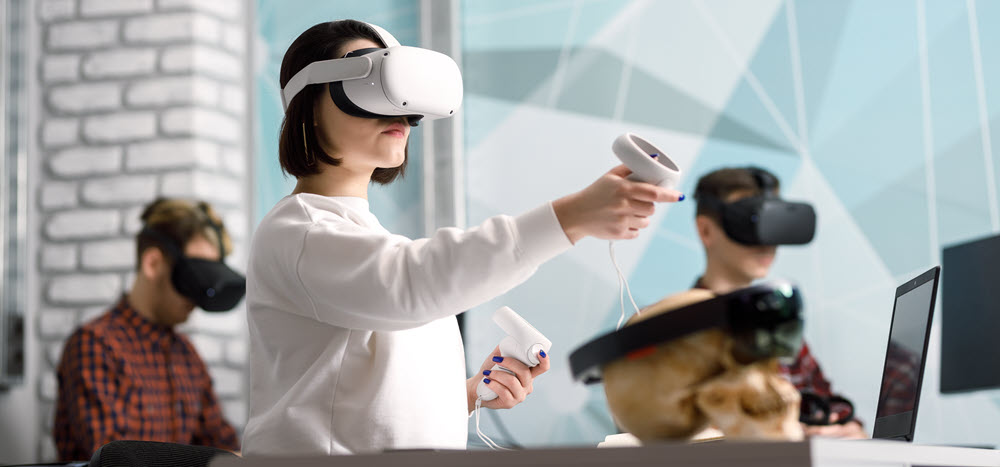The world of sports is constantly evolving, not only in terms of athletes’ performances but also in the way we, as spectators, engage with sports events. Traditional modes of watching games on television or in stadiums have been revolutionized by various technological advancements over the years. One such innovation that has garnered significant attention in recent times is virtual reality (VR) technology. Offering an immersive and interactive viewing experience, VR has the potential to redefine how we consume and experience sports.
Virtual reality has gained traction across different industries, and sports are no exception. By putting on a VR headset, fans can transport themselves into the midst of the action, capturing a 360-degree view of the game as if they were physically present. The technology allows viewers to choose their perspective, be it from a player’s point of view, a coach’s standpoint, or even from the best seat in the stadium. This level of immersion creates an unparalleled sense of realism and engagement, offering a unique way to experience sporting events.
One significant advantage of VR in sports lies in its ability to deliver a more personalized and customizable experience. Fans can choose the specific camera angles they prefer, focus on athletes they admire, and even access real-time statistics and insights, all within the virtual environment. This level of customization empowers viewers and provides them with a sense of control over their sports-watching experience. Furthermore, VR technology enables fans to participate in live events from remote locations, eliminating geographical barriers and enabling a truly global sports community.
Apart from enhancing the viewing experience, virtual reality technology is also being employed as a training tool for athletes. By creating virtual simulations that mirror real-game situations, athletes can hone their skills, improve decision-making abilities, and experiment with different strategies. VR provides a safe and controlled environment for athletes to practice and learn, without the risk of injury or physical exhaustion. Some professional sports teams and organizations have already implemented VR as a part of their training regimen, recognizing its potential to enhance competitiveness and performance.
The rise of VR in sports has also led to new opportunities for sports marketing and sponsorships. Brands can integrate their products and services seamlessly into the virtual environment, creating interactive advertisements and immersive brand experiences. For example, a sports equipment company could allow viewers to virtually try on their latest gear or test the performance of a new product. This merging of sports and marketing opens up avenues for revenue generation and creates innovative ways for brands to connect with their target audience.
While virtual reality technology in sports is still in its nascent stage, its potential is undeniable. As the technology becomes more accessible and affordable, we can anticipate a growing adoption among sports fans and organizations alike. However, challenges remain, such as the need for reliable and high-speed internet connections to support seamless VR streaming and the development of user-friendly interfaces that cater to a diverse range of users.
In conclusion, virtual reality is transforming the way we engage with sports, offering a more immersive and personalized viewing experience. From providing fans with an up-close perspective to serving as a training tool for athletes, VR has the potential to revolutionize the sports landscape. As the technology continues to evolve, it is essential for sports organizations, athletes, and fans to embrace these advancements and explore the possibilities they present. Virtual reality is poised to redefine sports viewing, creating a future where fans are active participants in the games they love. So, grab your VR headset, and get ready to dive into a whole new world of sports.

